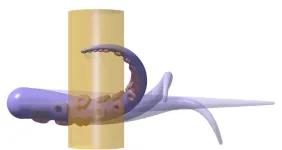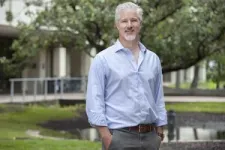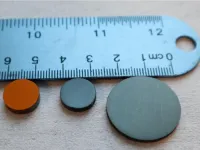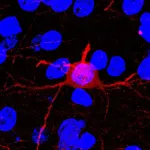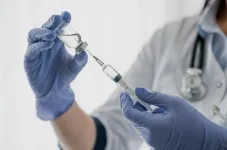(Press-News.org) Octopus arms coordinate nearly infinite degrees of freedom to perform complex movements such as reaching, grasping, fetching, crawling, and swimming. How these animals achieve such a wide range of activities remains a source of mystery, amazement, and inspiration. Part of the challenge comes from the intricate organization and biomechanics of the internal muscles.
This problem was tackled in a multidisciplinary project led by Prashant Mehta and Mattia Gazzola, professors of mechanical science & engineering at the University of Illinois Urbana-Champaign. As reported in Proceedings of the Royal Society A, the two researchers and their groups have developed a physiologically accurate model of octopus arm muscles. “Our model, the first of its kind, not only provides insight into the biological problem, but a framework for design and control of soft robots going forward,” Mehta said.
The impressive capabilities of octopus arms have long served as an inspiration for the design and control of soft robots. Such soft robots have the potential to perform complex tasks in unstructured environments while operating safely around humans, with applications ranging from agriculture to surgery.
Graduate student Heng-Sheng Chang, the study’s lead author, explained that soft-bodied systems like octopuses’ arms present a major modeling and control challenge. “They are driven by three major internal muscle groups—longitudinal, transverse, and oblique—that cause the arm to deform in several modes—shearing, extending, bending, and twisting,” he said. “This endows the soft muscular arms with significant freedom, unlike their rigid counterparts.”
The team’s key insight was to express the arm musculature using a stored energy function, a concept borrowed from the theory of continuum mechanics. Postdoctoral scholar and corresponding author Udit Halder explained that “The arm rests at the minimum of an energy landscape. Muscle actuations modify the stored energy function, thus shifting the equilibrium position of the arm and guiding the motion.”
Interpreting the muscles using stored energy dramatically simplifies the arm’s control design. In particular, the study outlines an energy-shaping control methodology to compute the necessary muscle activations for solving manipulation tasks such as reaching and grasping. When this approach was numerically demonstrated in the software environment Elastica, This model led to remarkably life-like motion when an octopus arm was simulated in three dimensions. Moreover, according to Halder, “Our work offers mathematical guarantees of performance that are often lacking in alternative approaches, including machine learning.”
“Our work is part of a larger ecosystem of ongoing collaborations at the University of Illinois,” Mehta said. “Upstream, there are biologists who perform experiments on octopuses. Downstream, there are roboticists who are taking these mathematical ideas and applying them to real soft robots.”
Mehta’s and Gazzola’s groups collaborated with Rhanor Gillette, Illinois Professor Emeritus of molecular and integrative physiology, to incorporate observed octopus physiology into their mathematical model for this study. Future work will discuss the biological implications of energy-based control. In addition, the researchers are collaborating with Girish Krishnan, an Illinois professor of industrial & enterprise systems engineering, to incorporate their mathematical ideas into real soft robot design and control. This will not only create a systematic way of controlling soft robots, but will also provide a deeper understanding of their working mechanisms.
This work was part of the CyberOctopus project, a multidisciplinary university research initiative in the University of Illinois’ Coordinated Science Laboratory supported by the Office of Naval Research.
END
Reaching like an octopus: A biology-inspired model opens the door to soft robot control
2023-02-25
ELSE PRESS RELEASES FROM THIS DATE:
Notable inaccuracies found in insurers’ mental health care provider directories in California
2023-02-25
As the mental health crisis continues across the nation, many people struggle to find the care they need. Health insurers publish directories of mental health providers to help consumers obtain care; however, inaccurate directories and a shortage of providers within many insurance networks can make finding covered mental health services challenging.
The U.S. federal government and those of many states have put regulations in place to ensure provider directory accuracy, with California having some of the most stringent rules. However, research on the accuracy of mental health care provider directories has been limited. Simon Haeder, PhD, associate ...
Workers moving products in the U.S. food supply chain at high risk of injury
2023-02-25
UNIVERSITY PARK, Pa. — Workers tasked with moving products in the immense U.S. food system are at a high risk of serious injury, according to a new Penn State-led study, and pandemic-caused, supply-chain problems have worsened the situation, researchers suggest.
The modern food supply chain presents unique hazards to employees that result in higher rates of death and injury when compared to most other industries, noted lead researcher Judd Michael, Penn State professor of agricultural and biological engineering. ...
First-of-its-kind study examines the impact of cannabis use on surgical patients' post-procedure healthcare needs
2023-02-25
BOSTON – As legislation in multiple states eases former restrictions around medical and recreational cannabis in the United States, an increasing proportion of the population reports use of the drug. Between 2016 and 2018, more than 22 percent of Massachusetts residents reported any prior cannabis use for medical or recreational reasons. However, little is known about cannabis use in patients who undergo surgery or interventional procedures, where cannabis use has important additional clinical implications.
In a new study published in The Lancet’s eClinical Medicine, researchers led ...
New method creates material that could create the next generation of solar cells
2023-02-25
UNIVERSITY PARK, Pa. — Perovskites, a family of materials with unique electric properties, show promise for use in a variety fields, including next-generation solar cells. A Penn State-led team of scientists created a new process to fabricate large perovskite devices that is more cost- and time-effective than previously possible and that they said may accelerate future materials discovery.
“This method we developed allows us to easily create very large bulk samples within several minutes, rather than days or weeks using traditional methods,” said Luyao Zheng, a postdoctoral researcher in the Department of Materials Science at Penn State and lead author on the ...
PETA scientists’ roadmap to animal-free research gets COVID-era update
2023-02-25
Washington — PETA scientists have just released a new edition of the groundbreaking Research Modernization Deal (RMD), the world’s first comprehensive plan for phasing out the use of animals in experimentation. The update is packed with new, cutting-edge information and reflects the latest scientific developments and regulatory changes since the RMD was first introduced in 2018.
The RMD provides detailed information about the pressing need to transition toward human-relevant research, and this new edition outlines non-animal methods for studying COVID-19. It also ...
Excess weight, obesity more deadly than previously believed
2023-02-25
Excess weight or obesity boosts risk of death by anywhere from 22% to 91%—significantly more than previously believed—while the mortality risk of being slightly underweight has likely been overestimated, according to new CU Boulder research.
The findings, published Feb. 9 in the journal Population Studies, counter prevailing wisdom that excess weight boosts mortality risk only in extreme cases.
The statistical analysis of nearly 18,000 people also shines a light on the pitfalls of using ...
Clues about the northeast’s past and future climate from plant fossils
2023-02-25
Ancient climates can help us understand the past, but also the future. 23 million years ago, in a time called the Miocene Epoch, Connecticut was around five to six degrees warmer than today and located roughly where Long Island is now. By the end of the Miocene, around five million years ago the earth had gradually cooled, Antarctica was glaciated, and there was some Arctic ice as well.
This cooling scenario moved in the opposite direction of today’s changing climate. One difference UConn Department of Earth Sciences Assistant Professor in Residence Tammo Reichgelt points out is that in the past, these changes happened gradually, spaced ...
A new epigenetic brain defense against recurrence of opioid use
2023-02-25
Substance use disorder (SUD) is an extremely difficult disorder to overcome, and many individuals with SUD return to regular use after repeated attempts to quit.
A return to regular drug use can be caused by the body’s physical dependence on the drug as well as experiences associated with prior drug use. Exactly how these drug associations are formed in the brain and how they trigger a return to drug use remain unclear.
“Individuals make long-lasting associations between the euphoric experience of the drug and the people, places and things associated with drug use,” said Christopher Cowan, Ph.D. professor in the Department ...
Markey Cancer Center study shows potential for new radiopharmaceutical cancer treatment
2023-02-24
LEXINGTON, Ky. (Feb. 24, 2023) — A recent University of Kentucky Markey Cancer Center study suggests a new radiopharmaceutical compound may be a viable treatment option for patients with advanced cervical cancer.
The study, led by UK Markey Cancer Center radiation oncologist Charles Kunos, M.D., and published in Frontiers in Oncology, validates that the radioactive drug 212Pb-DOTAM-GRPR1 may be useful in the treatment of persistent, recurrent, or metastatic cervical cancer.
Radiopharmaceuticals are expected to play ...
A mysterious object is being dragged into the supermassive black hole at the Milky Way’s center
2023-02-24
For two decades, scientists have observed an elongated object named X7 near the supermassive black hole at the center of the Milky Way and wondered what it was. Was it pulled off a larger structure nearby? Was its unusual form the result of stellar winds or was it shaped by jets of particles from the black hole?
Now, having examined the evolution of X7 using 20 years of data gathered by the Galactic Center Orbit Inintiative, astronomers from the UCLA Galactic Center Group and the Keck Observatory propose that it could be a cloud of dust and gas that was ejected during the collision of two stars.
Over time, they report, X7 has stretched, and it is being pulled apart ...
